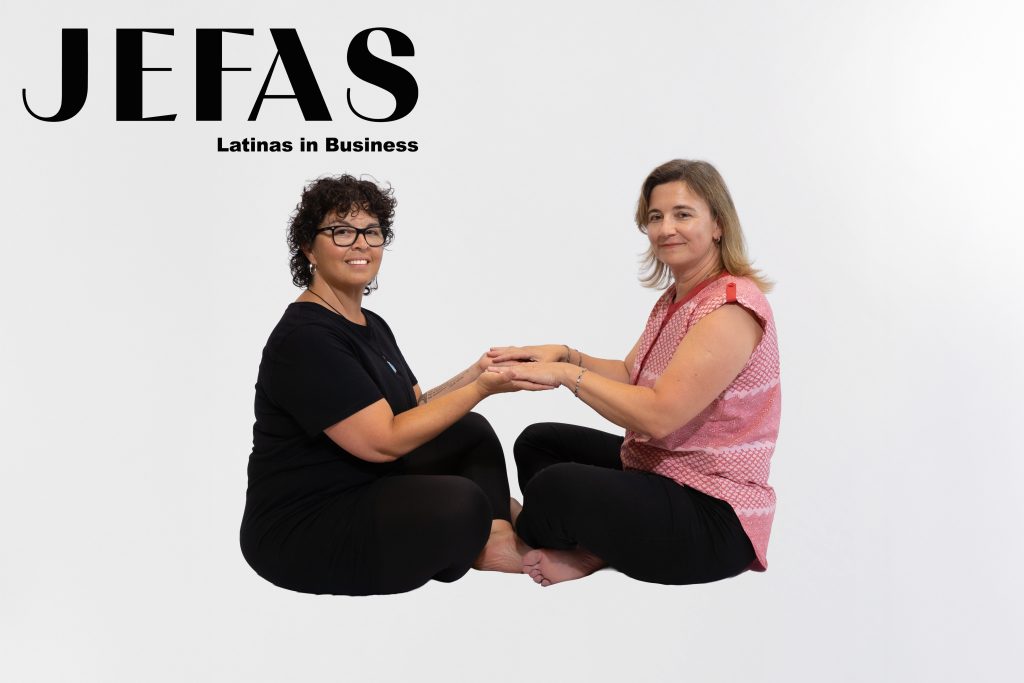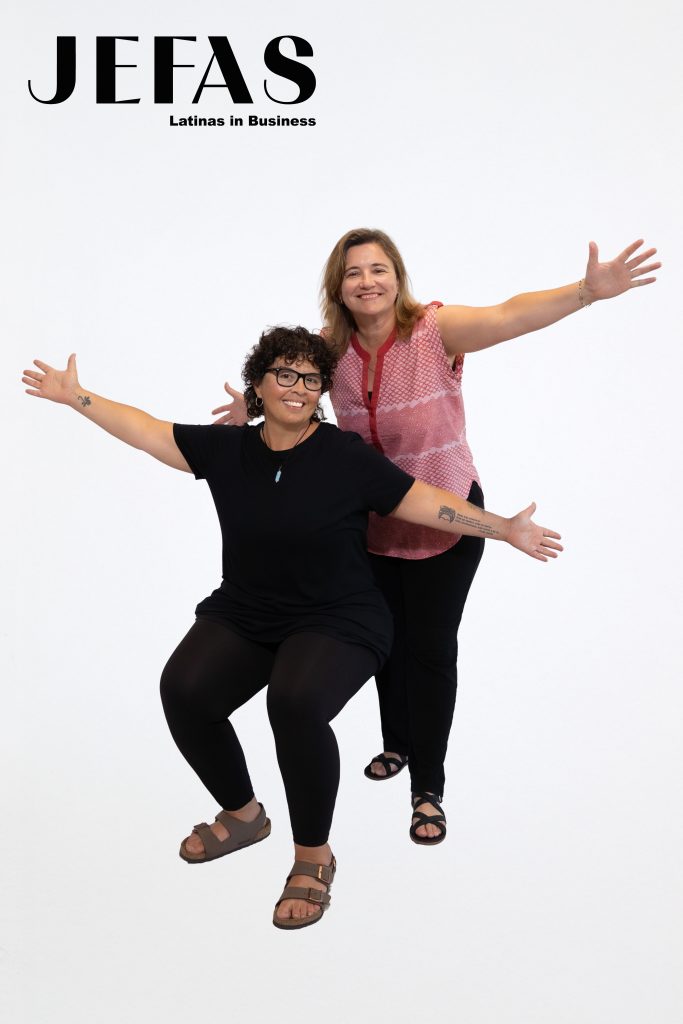Healing as Social Action and Community Connection

Sol Varisco y Deyanira Contreras, teachers of Biodanza. Photo by Tatiana Peña, JEFAS Magazine
By Christina Fernández-Morrow, JEFAS Magazine
Gentle rhythms stream from speakers while people of all ages, heights and backgrounds sway, eyes closed, arms rising and falling. The beat pulses through them, creating a vibe of celebration and calm. Some participants hum softly; others are silent. There are smiles and faces deep in concentration and all of it is welcome in this sanctuary of movement and community.
They’re not partying, they’re healing through movement and connection.
The Origins of Biodanza: The Dance of Life
This is Biodanza, created by Rolando Toro, a psychology professor and researcher in Chile. Sol Varisco and her partner Deyanira Contreras lead sessions every Monday at Mainframe Studios in downtown Des Moines, introducing Central Iowans to what Toro called the “Dance of Life.”
“The toughest part about Biodanza is explaining what it is exactly,” Varisco chuckles. “You have to experience it to really understand.”
Despite this challenge, Varisco is enthusiastic that so many have trusted her and Contreras enough to not only try Biodanza, but to stick with it long enough to feel the positive effects.
Biodanza was born from the belief that humans’ first expressions of connection happened through movement in utero. The practice activates personal growth and overall well-being by integrating individuals with their inner selves and others through what practitioners call Lines of Vivencia. The lines are vitality, sexuality, creativity, affectivity and transcendence which are the foundations of Biodanza.
A Personal Transformation
For Varisco, who discovered Biodanza while living in Argentina, these tenets became the basis of tremendous personal healing. When she began attending sessions, she carried major stress and struggled to find energy from long days of being a caretaker for her ailing grandmother. She felt disconnected from her body and out of alignment. After three years of Biodanza she felt physically stronger, mentally clearer and more in touch with her emotions than she ever had. When she moved back to Iowa she discovered that the practice was virtually unknown in the region and decided to bring it to her new home.
“I was the only person from Iowa taking the certification classes in LA,” she recalls about the rigorous three-part series of 10-month courses at the Los Angeles School of Biodanza. “We were in class all day Saturday from 9 am to 10 pm and Sunday from 9 am to 3 pm every month for three years.”
The first year Varisco learned the basics, which felt like a refresher from her own days participating in sessions. The second year taught her how to recognize the impact of the Lines of Vivencia and help participants connect them to changes they might be feeling. The final year focused on the practical aspects of planning and executing weekly sessions.
Intentional Design to Improve Healing and Growth
“The classes don’t come with a manual. They are customized based on what the participants need and how they are progressing,” Varisco explains. The facilitator has to observe what is needed and how it connects to the five pillars to know what types of movements would be most impactful for the next session. Even the music is intentional. “It is specially selected from a catalogue created for Biodanza based on how the sounds impact the nervous system,” notes Varisco. She and Contreras spend hours planning for their sessions, not only the logistics, but also referencing healing markers they can share to help keep participants motivated. But they don’t put a price on what they invest into the sessions.

Sol Varisco y Deyanira Contreras, teachers of Biodanza. Photo by Tatiana Peña, JEFAS Magazine
Connection as an Act of Social Action
“We understand that we’re not going to become millionaires from these classes,” comments Varisco. “Our riches come from seeing the changes in our community and every person on their journey.” Contreras agrees. “It’s an opportunity to invest in a dream and it’s an exchange. We don’t propose it as a cost per class. We offer a range to contribute, but no one is turned away. Some people contribute every week, some don’t.”
The goal is simply to cover the cost of the space where they meet. Contreras doesn’t describe it as a business, but as a work of social action. “We help better the participants who better the community that we’re all living in,” she explains. “It is a way of revolutionizing our existence, especially in the climate we live in now.”
As the only certified facilitators in the Midwest, Varisco and Contreras would love to expand beyond their single group, perhaps offering sessions in neighboring states. “I see Biodanza being part of a service for parents, caregivers and social workers because it’s a system of human development,” envisions Contreras.
For now, the women are excited for the community they’ve built around healing, and the possibilities it has created to spread Biodanza to others.
“I love being able to provide a space where people can gather and move and be in community,” says Contreras with a smile. Participants say they learn most from the collective. “I have evolved in my ability to move with different energies, to play, to gaze in others’ eyes, to touch. I am still learning to trust and talk about feelings, but I learn from others,” says Rosa M about her experience.
For anyone curious about Biodanza, they encourage you to try it. You might just find the healing you didn’t know you needed.


